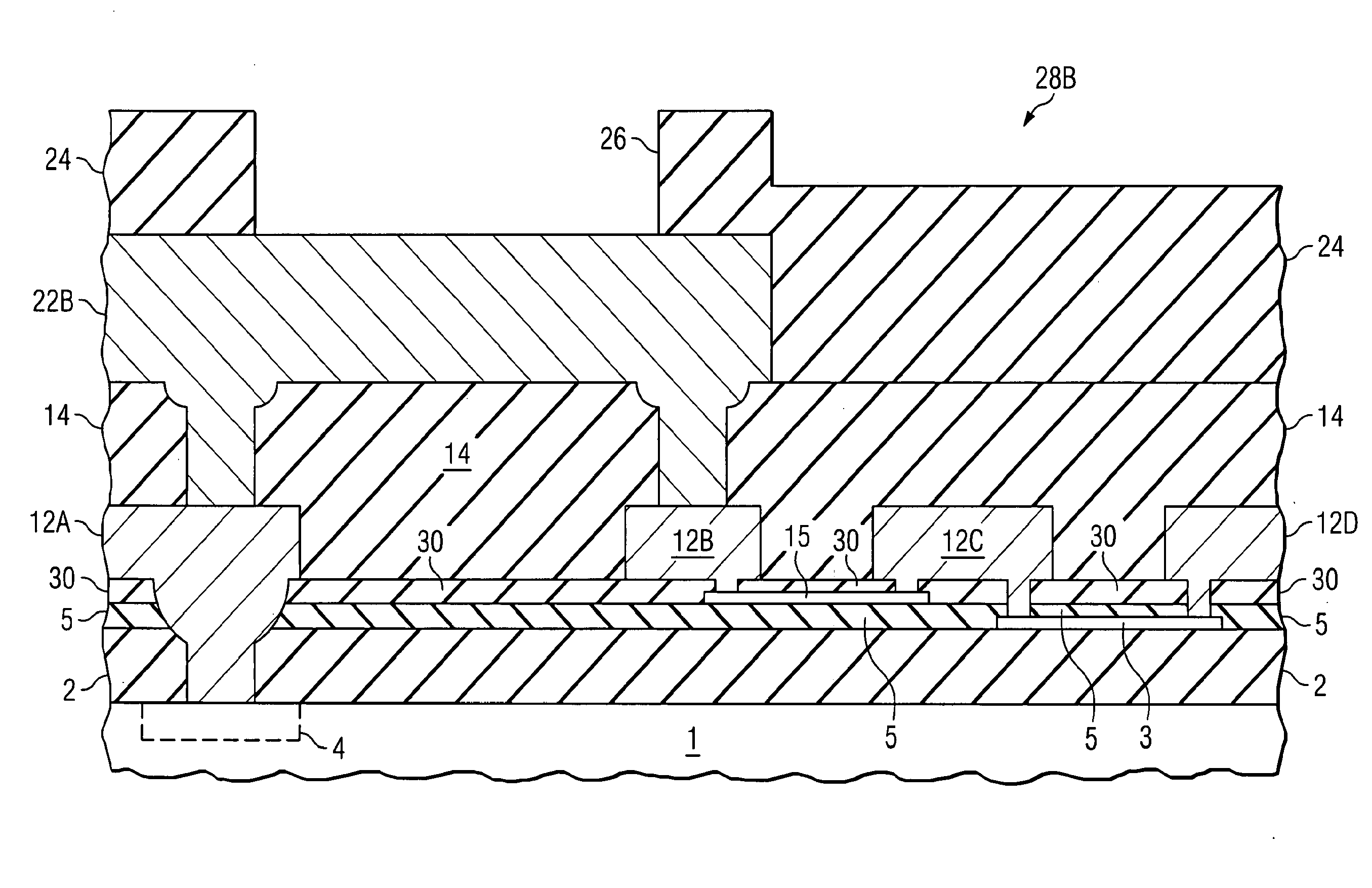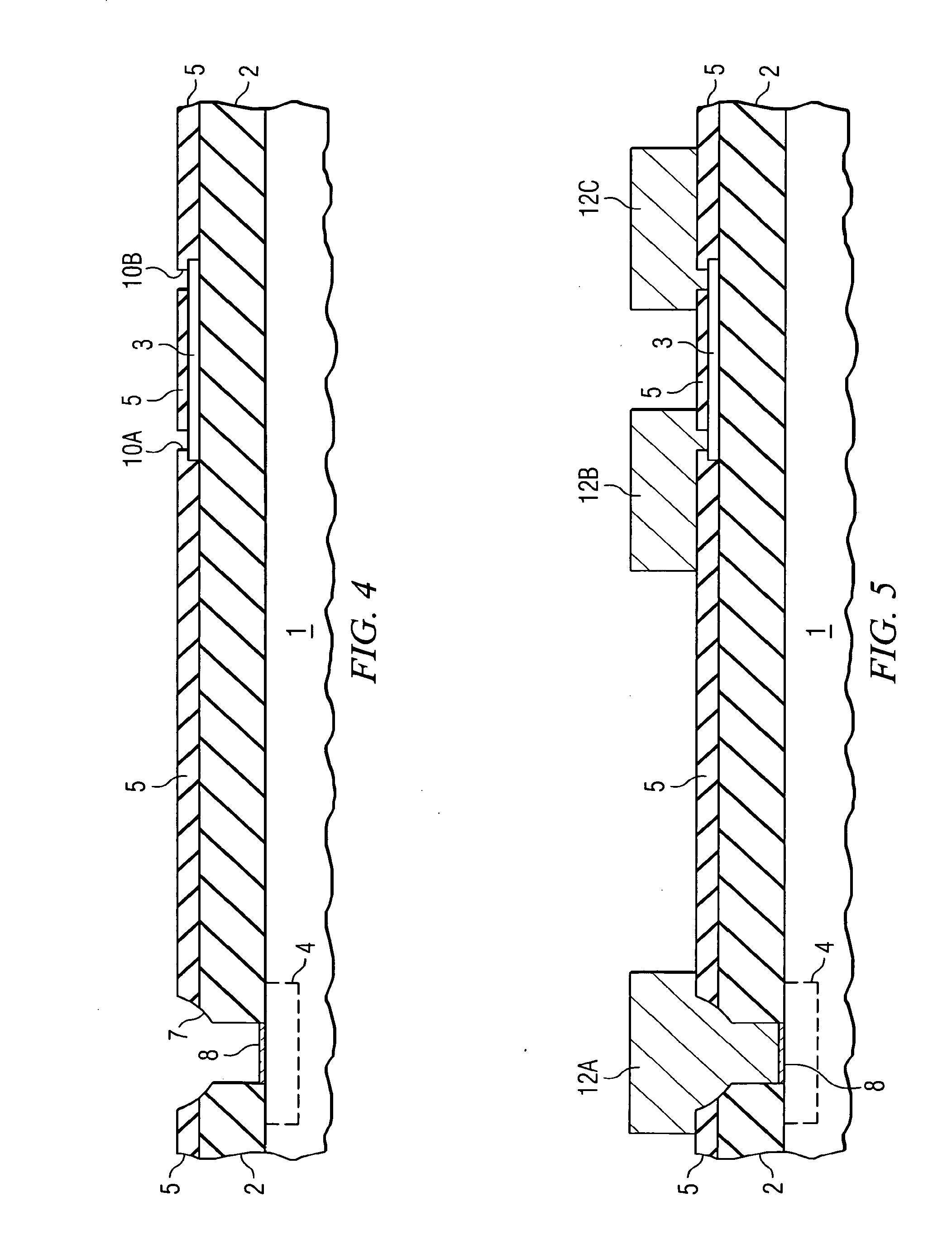INTEGRATION OF THIN FILM RESISTORS HAVING DIFFERENT TCRs INTO SINGLE DIE
a thin film resistor and single die technology, applied in the direction of solid-state devices, basic electric elements, semiconductor devices, etc., can solve the problems of difficult integrated circuit processing, difficult control of the effect of various thermal cycles on the sheet resistance and tcrs of multiple thin film resistors formed on successive oxide layers, and no practical, economical way to achiev
- Summary
- Abstract
- Description
- Claims
- Application Information
AI Technical Summary
Benefits of technology
Problems solved by technology
Method used
Image
Examples
first embodiment
[0023]FIGS. 1-11 illustrate a sequence of processing operations according to the invention for fabricating a first thin film resistor structure including two thin film resistors composed of different thin film material having the same or different sheet resistances and also having the same or different TCRs.
[0024]FIG. 1 shows a starting silicon substrate 1 having a standard pre-metal dielectric layer 2 including a first TEOS (tetraethylorthosilicate) layer on silicon substrate 1, a BPTEOS (Boron-Phosphorus TEOS) layer on the first TEOS sublayer, and a second TEOS layer on the BPTEOS sublayer. A thin layer 3 of sichrome (SiCr) having a sheet resistance, typically in the range from 30 to 2000 ohms per square (based on previously developed curves of TCR versus sheet resistance for the particular SiCr deposition process), has been deposited on the upper surface of pre-metal dielectric layer 2. An anneal process has been performed to adjust the TCR of SiCr layer 3 to a desired (typically...
second embodiment
[0040]In the invention, two different thin film SiCr layers of the same or different sheet resistances and different TCRs are integrated into a structure in which the two different SiCr layers can be interconnected by only the Metal 1 level of interconnect metallization, whereas in the embodiment of FIGS. 1-11, the second SiCr resistor 15 can only be electrically contacted by means of the Metal 2 interconnect metallization layer.
[0041]The same wafer structure with SiCr layer 3 as shown in FIG. 1 is the starting point in making the second embodiment of the invention. FIGS. 12-19 illustrate a sequence of further processing operations according to the second embodiment of the invention for fabricating a thin film resistor structure including two thin film resistors including the same or different sheet resistances and the same or different TCRs, with the ability to adjust the TCR of the lower SiCr layer 3 so as to not affect the subsequently formed upper SiCr layer 15. Referring to FIG...
PUM
 Login to View More
Login to View More Abstract
Description
Claims
Application Information
 Login to View More
Login to View More - R&D
- Intellectual Property
- Life Sciences
- Materials
- Tech Scout
- Unparalleled Data Quality
- Higher Quality Content
- 60% Fewer Hallucinations
Browse by: Latest US Patents, China's latest patents, Technical Efficacy Thesaurus, Application Domain, Technology Topic, Popular Technical Reports.
© 2025 PatSnap. All rights reserved.Legal|Privacy policy|Modern Slavery Act Transparency Statement|Sitemap|About US| Contact US: help@patsnap.com



